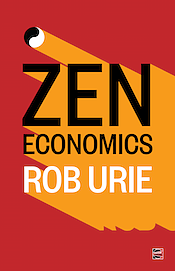It’s difficult to imagine that another book about race in the United States published this year will be as disturbing as Timothy B. Tyson’s The Blood of Emmett Till. As many readers know, Till was a fourteen-year-old black boy from Chicago, visiting relatives in Mississippi in 1955. Because he is said to have provoked a white woman by flirtation and a wolf’s whistle, he was brutally murdered by the woman’s husband and half-brother: his body repeatedly beaten and mutilated, finally shot, and dumped in a river, from where it was retrieved three days later. At the trial, the killers (who had confessed to their crime) were exonerated and lived the rest of their lives, even profiting from the horrible murder by publishing an account of it. The nation professed to be shocked but did little about the despicable crime, though Mamie, Till’s mother, spent much of the rest of her life publicizing the atrocity, beginning with insisting that her son’s casket would be open at his funeral for all the world to see.
The Emmett Till murder remains one of the worst incidents of “Southern justice” in a nation that still, today, is struggling to deal with the country’s legacy of slavery, Reconstruction, Jim Crow, and Civil Rights. In this powerful new book, Tyson says that Carolyn Bryant, the white woman who claimed to be Till’s victim, contacted him after the publication of his earlier book, Blood Done Sign My Name (2004). She had not spoken out about the incident during all the years since it had occurred. In their encounter, she told Tyson that her fifty-year-old account of being assaulted by Emmitt Till “had never been true.” He had “not grabbed her, and…not attempted to rape her.” Emmett’s own mother had said repeatedly, “Nothing that boy did could ever justify what happened to him.”
What we do know is that Mamie’s marriage to Louis Till was troubled. As John Edgar Wideman has written in Writing to Save a Life (see my review in CounterPunch, Dec. 16, 2016), Louis joined the army to get around the restraining order against him, and shortly after WW II was executed for supposedly raping an Italian woman. Those charges are likely to be as erroneous as the ones against his son, in 1955. Emmett grew up without his biological father (his mother eventually remarried) and suffered from polio as a child. Carolyn Bryant and her husband had a store in Money, Mississippi, that catered mostly to poor black people. Emmett entered the store and said something that angered her, presumably a sexual innuendo. His fate was immediately sealed.
When Emmett’s body was pulled from the Tallahatchie River several days later, it was obvious that his head had been crushed before he was shot, and his body had been weighted down by a 150 pound iron fan “used to ventilate cotton gins, [which] was lashed to the corpse’s neck with several feet of barbed wire.” His feet had floated up and  broken the surface of the water. When Mamie identified her son’s body, she said, “”Let the people see what they did to my boy.” Photos appeared in major American publications. Thousands (estimates run from 100,000 to 250,000) viewed the open casket in Chicago in September.
broken the surface of the water. When Mamie identified her son’s body, she said, “”Let the people see what they did to my boy.” Photos appeared in major American publications. Thousands (estimates run from 100,000 to 250,000) viewed the open casket in Chicago in September.
The twelve jurors during the trial were all white men. There had been increased racial tensions in the South for several months before Till’s murder, provoked in part by the Brown v. Board of Education decision the year before. “One Delta legislator declared that ‘a few killings would be the best thing for the state.’ A few judicious murders now, he suggested ‘would save a lot of bloodshed later on.’” The NAACP was cited throughout the trial as a Communist organization, inciting unrest in the South. The little town of Sumner of a few hundred people, where the trial took place (because of where the body had turned up), was overwhelmed by observers. The courtroom was packed, with another thousand people outside. The prosecution tried to indict Chicago as the real problem, i.e., that Till’s actions were caused by the liberal environment where he had grown up. The carnival-like aspect in the courtroom included people drinking beer (the temperature was almost 100 degrees).
But what was much worse was the judge’s decision to remove the jury from the courtroom during the questioning of several important witnesses (including Till’s mother’s). Worst of all was the defense’s position that “the body pulled from the river was not the body of Emmett Till but instead part of an NAACP-sponsored scheme to bring down shame upon the state of Mississippi and drive a wedge between the states.” Sounds like Alex Jones’ crazy statement that the Obama government staged Sandy Hook so the government can confiscate citizens’ guns. With such construed testimony, Till’s mother left the courtroom before the jury’s decision. She and many other black people knew that justice would not be served. The jury debated for barely an hour and then returned with their decision of “not guilty” for the two accused murderers.
Tyson describes the Emmett Till murder as “the most notorious racial incident in the world.” Fortunately, the Northern press and the international reaction to the court’s decision kept the trial in the news. There were protests throughout the United States for several months. Dean Acheson, Secretary of State, in 1952, had earlier contextualized the problem of such incidents for the country: “Racial discrimination in the United States remains a source of constant embarrassment to this Government in the day-to-day conduct of its foreign relations.” Fortunately, the NAACP kept up its battle with the South. Mamie Till Bradley and Moses Wright, a spokesperson for the organization, were determined that the tragedy would remain in the news, speaking to audiences totaling a quarter of a million people during the ensuing months.
Tyson’s profound conclusion moves the Emmett Till tragedy into the present time: “We are still killing black youth because we have not yet killed white supremacy.” Much earlier, William Faulkner commented on the murder as follows, “If we in America have reached the point in our desperate culture where we must murder children, no matter for what reason or what color, we don’t deserve to survive and probably won’t.” Or, in the words of James Baldwin, “Not everything that is faced can be changed; but nothing can be changed until it is faced.” Think of how important those words remain today.
Timothy B. Tyson’s The Blood of Emmett Till
Simon & Schuster, 285 pp., $27











